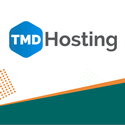In the ever-evolving digital landscape, bloggers must adopt effective growth strategies to enhance their online presence and achieve business growth. This article will explore various proven strategies that can help you grow your blog while also boosting your overall business performance. Whether you are just starting a blog or looking to enhance an established platform, understanding these growth strategies is essential for attracting potential customers and maximizing website traffic.
Understanding Growth Strategies for Blogs
What is a Growth Strategy?
A growth strategy is essentially a plan of action aimed at improving a business’s performance and expanding its market presence. In the blogging realm, this means implementing various techniques designed to increase traffic and enhance reader engagement. By creating high-quality blog content and optimizing it for search engines, bloggers can effectively convert visitors into loyal customers. A well-defined growth strategy allows bloggers to identify their target audience, set measurable goals, and evaluate the effectiveness of different tactics over time. This roadmap is vital for achieving sustainable growth and long-term profitability in the competitive world of blogging.
Importance of Growth Strategies for Business Owners
Growth strategies hold immense significance for business owners, as they offer a structured approach to scaling operations and maximizing revenue. For bloggers, having a clear growth strategy is essential to navigate the competitive landscape of online content. Research shows that businesses employing growth strategies can experience a remarkable 13x higher return on investment compared to those that do not prioritize these tactics. Moreover, effective growth strategies contribute to building brand authority, enhancing customer loyalty, and expanding market share. By focusing on well-crafted strategies to grow your blog, you ensure that your content reaches a wider audience and aligns with your overall business objectives.
Types of Growth Strategies to Consider
Bloggers have a myriad of growth strategies to consider, including content marketing, SEO optimization, social media engagement, and email marketing. Content marketing revolves around creating valuable and relevant content to attract and retain an audience, while SEO optimization focuses on enhancing the visibility of blog posts in search engine results, driving organic traffic. Engaging with your audience on social media platforms like Facebook and Instagram fosters a community around your blog content. Additionally, building an email list through email marketing allows bloggers to communicate directly with subscribers, nurturing a relationship that can lead to increased traffic to your blog and potential monetization opportunities. Each type of growth strategy can be customized to meet the specific goals and audience of your blog, ensuring a tailored approach to achieve blog growth.
Creating Great Content to Grow Your Blog

How to Write Blog Posts that Engage Your Audience
To successfully grow your blog, it is essential to create high-quality content that resonates with your target audience. Engaging blog posts should ideally be around 1,500 words, providing enough depth to captivate readers. Writing in a conversational tone enhances relatability, making it easier for blog readers to connect with the content. Incorporating storytelling elements can further engage your audience on an emotional level, encouraging them to share your blog with others. Additionally, using visuals such as images and videos breaks up text, maintaining reader interest and enhancing the overall experience of your blog posts.
SEO Techniques for Blog Content Optimization
Implementing effective SEO techniques is a critical step in optimizing blog content for search engines, ensuring your content reaches potential customers. Start by conducting thorough keyword research to identify relevant search terms related to your blog topics. Optimize on-page elements like titles, meta descriptions, and headings to improve visibility. Naturally incorporating target keywords throughout your content, especially in the introduction and conclusion, is vital for enhancing search engine rankings. Utilizing internal links to connect related articles not only improves user experience but also helps reduce bounce rates, a key factor in a successful blog’s performance. Regular updates to keep your content fresh are equally important in an evolving digital landscape.
Creating a Content Calendar for Consistency
A well-structured content calendar is essential for maintaining consistency in your blogging efforts. By establishing a content schedule, you can strategically plan and publish posts, ensuring a steady stream of fresh blog content that keeps your audience engaged. Research indicates that consistent posting frequency can significantly enhance audience retention and engagement, which are crucial for blog growth. When creating your calendar, consider aligning your content with key topics, seasonal trends, and the preferences of your target audience. Tools like Trello or CoSchedule can streamline the process, making it easier to manage your content strategy effectively and support your overall business growth plan. Additionally, using a reliable VPN service like VPN Unlimited can ensure secure and uninterrupted access to your content management tools, especially when working remotely or traveling.
Proven Strategies to Promote Your Blog
Utilizing Social Media for Blog Promotion
Social media platforms are invaluable tools for promoting blog content and significantly increasing visibility. With over 400 million active users on Pinterest alone, bloggers can leverage these channels to drive substantial traffic to their sites. Engaging with followers through compelling blog posts, stories, and direct messages fosters a loyal audience. Utilizing branded graphics alongside relevant hashtags enhances the discoverability of blog content. Moreover, reposting content from other blogs not only builds relationships within the community but also encourages reciprocal sharing, creating a mutually beneficial environment that can lead to increased traffic and engagement.
Building an Email List for Direct Engagement
Establishing an email list is one of the most effective strategies for direct engagement with your target audience. Email marketing delivers impressive ROI, with businesses averaging a return of $42 for every dollar spent. To successfully grow your email list, bloggers should prominently feature sign-up forms on their websites and consider offering enticing lead magnets, such as free eBooks or templates, to incentivize subscriptions. Regularly sending newsletters filled with valuable content keeps subscribers engaged and encourages them to share your blog with their networks, further enhancing your reach and potential for blog growth.
Collaborating with Other Bloggers and Influencers
Collaboration with other bloggers and influencers can dramatically enhance visibility and reach for your blog. Guest posting on established blogs allows you to tap into new audiences while influencers amplify your content through their platforms. Building relationships with fellow bloggers can lead to cross-promotion opportunities, such as social media shares and collaborative projects, which are effective types of growth strategies. Engaging with influencers within your niche not only provides valuable insights but also fosters best practices that can drive greater audience engagement and ultimately contribute to the growth of your blog.
Analyzing Your Target Audience for Effective Growth
Understanding Your Audience’s Needs and Preferences
To effectively grow a blog, it is crucial to understand the needs and preferences of your target audience. Conducting market research, surveys, and analyzing feedback can provide insights into the types of content that resonate most. Creating detailed reader personas enables bloggers to tailor content specifically to demographics, ensuring relevance and engagement. Additionally, monitoring engagement metrics such as comments, shares, and likes can help identify popular topics, informing future content strategies that align with audience interests and contribute to overall blog growth.
Utilizing Analytics Tools for Audience Insights
Analytics tools are essential for gaining invaluable insights into audience behavior and preferences. Platforms like Google Analytics offer crucial data regarding website traffic, user demographics, and engagement metrics. By analyzing this data, bloggers can identify trends, such as which blog posts attract the most visitors and how users navigate their sites. Understanding these patterns allows bloggers to optimize their content strategy, focusing on high-performing topics while improving areas that may be underperforming, thus ensuring a more targeted approach to grow your blog and enhance business growth.
Adapting Your Growth Strategies Based on Feedback
Regularly adapting growth strategies based on audience feedback is vital for ongoing improvement. Soliciting feedback through surveys, comments, and social media interactions provides valuable insights into what readers appreciate and what could be enhanced. Bloggers should remain open to making adjustments in their content, formatting, or promotional strategies based on this feedback. This iterative approach not only ensures that the blog remains relevant and resonates with its audience but also fosters loyalty, encouraging growth and ultimately contributing to a robust blog business strategy.
Leveraging Search Engine Optimization for Business Growth
Key SEO Practices to Increase Website Traffic
Implementing key SEO practices is essential for increasing website traffic and ensuring your blog content reaches potential customers. This includes optimizing on-page elements such as titles, headings, and meta descriptions to align with target keywords. Additionally, creating high-quality, in-depth content that answers users’ queries is crucial for improving rankings in search results. Building backlinks from reputable sites can enhance domain authority, making it easier to rank higher in search results. Regularly updating content and conducting SEO audits will help maintain and improve search visibility over time, ultimately supporting your business growth strategy.
Keyword Research for Strategic Blog Growth
Keyword research stands as a foundational aspect of SEO that assists bloggers in identifying the terms their target audience is searching for. Utilizing tools like Google Keyword Planner and Ahrefs can help in finding low-competition keywords that are relevant to your blog’s niche. Focusing on long-tail keywords is a proven strategy that can drive targeted traffic, as these phrases often indicate a higher intent to engage or purchase a product or service. Incorporating these keywords naturally into your content, headings, and meta tags can significantly enhance visibility and attract more organic traffic to your blog.
On-Page vs. Off-Page SEO Techniques
Understanding the distinction between on-page and off-page SEO techniques is crucial for a comprehensive marketing strategy. On-page SEO focuses on optimizing individual web pages to rank higher in search results and earn more relevant traffic. This includes optimizing content, HTML source code, and meta tags. Conversely, off-page SEO involves activities outside the website that impact its rankings, such as link building, social media marketing, and influencer outreach. Both strategies are essential, as on-page techniques ensure the content is accessible and relevant, while off-page methods help establish authority and trustworthiness, which are vital for long-term blog growth.
Developing a Growth Plan for Long-Term Success
Setting Measurable Goals for Your Blog
Setting measurable goals is crucial for tracking progress and ensuring accountability in your blog’s growth strategy. Specific, measurable, achievable, relevant, and time-bound (SMART) goals can help bloggers focus their efforts and evaluate success effectively. For instance, a goal might be to increase monthly traffic by 20% within six months or to grow the email subscriber list by 500 over the same period. Regularly reviewing these growth goals allows bloggers to adjust their strategies as needed to stay on track and achieve sustainable business growth.
Implementing Effective Tracking and Reporting
Implementing effective tracking and reporting mechanisms is essential for bloggers to monitor their progress against set goals. Utilizing analytics tools can capture critical data on website traffic, user behavior, and engagement metrics. Regularly reviewing this data provides insights into what is working and what needs improvement. Creating reports summarizing key performance indicators can help bloggers make informed decisions and adjust their strategies to optimize growth. This approach ensures that the content strategy aligns with the overall business growth plan, making it easier to adapt and thrive in the digital landscape.
Adjusting Your Growth Strategies as Needed
Adjusting growth strategies based on performance data and audience feedback is essential for long-term success. Bloggers should remain flexible and willing to pivot their approach if certain strategies are not yielding the desired results. This may involve experimenting with new content formats, exploring different promotional channels, or refining the target audience. By continuously evaluating and adapting strategies, bloggers can stay relevant and effectively meet the evolving needs of their audience. This iterative process is vital for sustaining growth and ensuring your blog remains a valuable resource in your niche.







